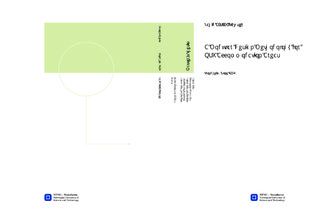| dc.description.abstract | Offshore shipbuilding industry is known for its highly customized products, which are in most cases tailor-made for specific missions. Being a traditionally conservative industry, it follows conventional design practices. Because of the urge to quickly respond to changing market situations and the need for a structured method to reuse design knowledge across different projects, modern design methodologies like modularization are of considerable interest in this industry. To implement modular thinking, it has to overcome many challenges such as non-functional engineering description of design, scaling, clustering, logistical issues, structural complexities etc. Different modular methodologies can be adopted to establish a modular product platform. Modular Function Deployment (MFDTM) is a popular theory of modularization with five distinct steps to identify the objects that should be modularized and optimize them for the whole manufacturing system. Application of MFDTM method reveals that among various spaces inside the accommodation of an OSV, crew single, crew double and officer s cabins are the most appropriate ones to be modularized.Based on the output of MFDTM method and the vessel database from System Based Ship Design (SBSD) approach for OSVs, a decision support framework has been developed to assist the naval architect of the vessel to design the accommodation block. Standardized templates are used for arrangement of the modules. The spaces in the accommodation are categorized into three module classes. The DSF can calculate the optimum size, type and location of the modules according to design requirements and system constraints. The vessel database is used here to determine the required area for the spaces that are not standardized. The DSF is demonstrated by an illustrative example and later by a simplified real case study. A mock up of a user interface has also been developed to give an idea of user interaction with a computer tool based on the DSF. For the real case study, a small program has been developed containing some 1200+ lines of code, which can process simplified accommodation design cases.To build an effective DSS for designing the accommodation block of OSVs, standardization of spaces by modularization must be done with enough room for flexibility of design by designer intervention. This DSF exhibits the underlying logics and structure of such DSS, which can be very useful to the designers upon further development. | nb_NO |

